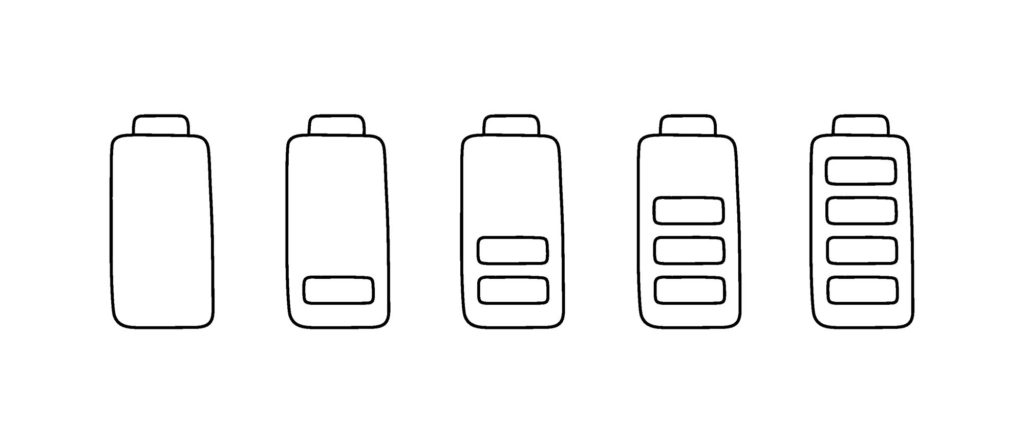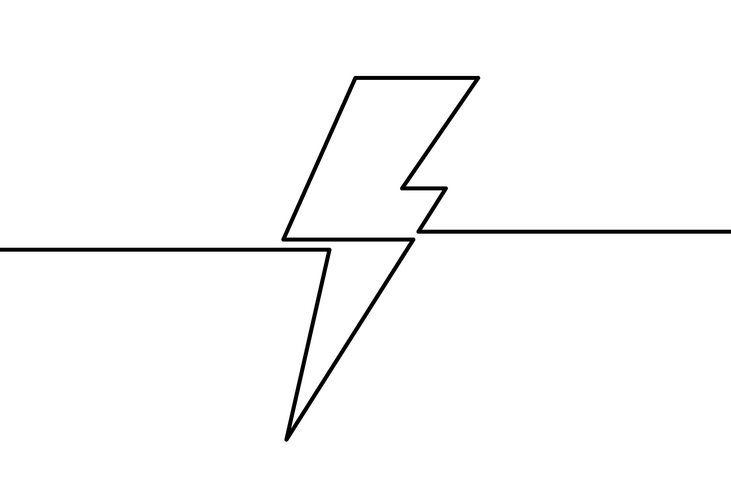Featured
Charging up the Creative Battery
Scientists pursue the use of electric brain stimulation to spur innovative thinking

- Creativity and problem-solving skills are among those most sought by employers in today’s innovation economy.
- Scientists have linked creative thinking with specific patterns of brain connectivity.
- Transcranial electrical stimulation (tES) shows promise for helping researchers energize creative potential and understand patterns of creative thought.
- Growing commercial interest in cognitive-enhancement technologies escalates the need to understand neurostimulation’s long-term effects, especially on the developing brain.
Measuring creativity in the brain • Zapping up ideas • Getting real
Some of history’s most renowned inventors used rather bizarre methods to nurture their genius. Nikola Tesla curled the toes on each of his feet 100 times every night, believing the practice energized his brain cells. Celebrity inventor Yoshiro Nakamatsu would nearly drown himself, claiming his best ideas came when he starved his brain of oxygen. Steve Jobs would free his brain of anxiety by dipping his feet in a toilet.
Few of us would resort to such extreme measures to arouse the muse. But an inventive spirit is becoming essential in today’s innovation economy. Employers cite creativity and problem-solving skills as among the most important talents they seek in the people they recruit.
“It used to be that having a great memory was what made a person really intelligent because you needed to hold onto information,” said Georgetown University psychological scientist Adam Green, who studies the brain’s creative mechanisms. “Now, everyone carries around a memory device. So, the meaning of ‘smart’ is changing. It’s shifting more toward creativity.”
For decades, psychological researchers and other scientists have explored ways to help even the most conventional thinkers transcend their mind’s limitations. Among their newest methods is a technique that once was fodder for science-fiction writers. By gently zapping key areas of the brain with mild electrical currents, neuroscientists are discovering ways to help individuals muster up ideas that might otherwise elude them.
Transcranial electrical stimulation (tES) operates via small electrodes placed on the scalp. The most widely used form of tES is transcranial direct current stimulation (tDCS), originally deployed to help patients with brain injuries or psychiatric disorders. tDCS delivers low-voltage electrical currents to targeted brain regions. Researchers can adjust the flow to either hike or suppress neuronal activity in that brain area. In essence, they can use the technique to help bolster areas of the brain associated with creative thought, subdue the areas that get in the way of innovative thinking, or both.
“Psychological scientists are increasingly using cognitive neuroscience tools such as tDCS to enhance individual creative potential, but also to understand the neural mechanisms involved in creativity,” said Evangelia Chrysikou, a Drexel University psychological scientist and cofounder and president of the Society for the Neuroscience of Creativity (SfNC).
For example, scientists using fMRI scans of people engaged in creative tasks have linked the most imaginative answers with specific patterns of brain activity and connectivity, Chrysikou explained in an interview.
“Once uncovered, these neural systems can then be targeted in a person-specific way with noninvasive brain stimulation methods such as tES to examine—and manipulate—causal relationships between brain and creative behavior,” she said.
Of course, tES is not a magic cure for a creative rut or a lack of vision, scientists caution. Cognitive strategies may also be essential. Still, brain stimulation holds the potential to energize creative potential.
“Our long-term goal is to see how these different individual approaches that enhance creativity can be combined with each other,” said Green, SfNC cofounder and past president. “Is there an optimal cocktail of creativity interventions that pushes the ceiling to a maximal level? And how can we personalize that or individualize that based on individual brains?”

Measuring creativity in the brain
At a basic level, scientists define creativity as the generation of original or novel ideas that are suited to the context. But creativity studies have historically operated in the disciplinary silos of psychology, education, and clinical neuroscience, with each using different concepts, taxonomies, and measurements. Some examine creativity in the form of divergent thinking, others as analytical problem-solving ability, and still others as spontaneous insight (Kounis & Beeman, 2014).
Among the most widely used tools to measure creative cognition to date is J. P. Guilford’s Alternative Uses Task, in which experimenters ask participants to think of uncommon uses for common objects such as a baseball bat or a bowl. A participant could, for example, propose using a coffee cup as a plant pot, a percussion instrument, or a spider trap. Researchers who use the measure typically look for the total number of alternatives, along with the originality, breadth, and detail of those ideas (Guilford, 1967; Birss, 2018).
Another measure of creative cognition is the Remote Associates Test (RAT), developed by Sarnoff Mednick in the 1960s. Each question on the RAT lists a group of unrelated words and challenges participants to summon a fourth word that will link all the others together. Participants can shape these words in a variety of ways, including the formation of compound words. For example, a person could link the words home, sea, and bed with the word sick to form homesick, seasick, and bed sick (Mednick, 1962).
Many other measures of creative cognition (e.g., the Torrance Tests of Creative Thinking; Torrance, 1974) distinguish between verbal and figural creativity. New tests aim to measure visuospatial skills essential for drawing and scientific abilities that are vital to invention and discovery (Beaty, 2020).
Green, Chrysikou, and other researchers formed SfNC in 2015 to foster cohesion in the field. (The group’s advisory board comprises some leading names in cognitive science, including APS William James Fellow Daniel L. Schacter of Harvard University, and APS Fellows Teresa Amabile, also of Harvard, Mark Beeman of Northwestern University, Keith Holyoak of the University of California, Los Angeles, and John Kounios of Drexel University.) SfNC’s initiatives include increasing consistency, reliability, and validity in the measures researchers use to capture creative ability (Kenett et al., 2020).
Zapping up ideas
By learning about the neural patterns of creative thought, scientists are exploring how to steer them in new directions. Green and fellow Georgetown neuroscientist Peter Turkeltaub tested tDCS on an area of the frontopolar cortex. They used the technique with 30 individuals participating in tasks designed to measure analogical reasoning and creative verbal thinking. In the analogy exercise, participants viewed five pairs of words arranged in a column on the left side of a computer screen (e.g., ruler–length, soap–hand) and 20 pairs of words arranged in a row across the top of the screen (e.g., clock–time, shampoo–hair). They were asked to create analogies by linking specific word pairs on the left side of the screen with the pairs at the top. Such semantic exercises are widely used to gauge verbal creativity (Green, 2016).
For the other task, experimenters showed the participants a noun and asked them to name a verb related to that noun. Some of the participants received tCDS, whereas others received sham (placebo) stimulation. The individuals who received the real frontopolar-cortex stimulation produced more creative analogies and noun–verb connections compared with the participants who received the sham stimulation (Green et al., 2017).

Chrysikou has deployed tDCS using a different approach—suppressing areas of the prefrontal cortex (PFC), which regulates thoughts and memory. Studies indicate that an active PFC may hinder certain aspects of flexible thinking (Chrysikou, 2019; Thompson-Schill et al., 2009). With her colleagues, psychological scientist Sharon Thompson-Schill and neurologist Roy Hamilton at the University of Pennsylvania, Chrysikou tested the effects of regulating activity in the ventrolateral PFC (VLPFC), a frontal lobe region typically associated with decision-making and the inhibition of emotional responses.
In one study, she and her collaborators asked study participants to either complete a version of the Alternative Uses Task or simply come up with the object’s typical function. Each group further received inhibitory tDCS over either their left or their right VLPFC, or sham stimulation. And to make sure the tDCS wasn’t affecting activity across the entire brain, the researchers had all participants complete a memory task that the inhibitory stimulation shouldn’t influence.
On average, the participants receiving the inhibition of the left VLPFC came up with more uncommon uses of the presented objects than those who received the right VLPFC inhibitory stimulation and those in the placebo group. The former group also came up with those ideas an average of a second faster than participants in the other two groups (Chrysikou et al., 2013). Chrysikou and her colleagues replicated these results in 2021, further demonstrating how controlling activity in the PFC, relative to other brain regions, can foster creative ideas (Chrysikou et al., 2021).
In another study, a team of researchers at Queen Mary University of London and Goldsmiths, University of London targeted the left dorsolateral prefrontal cortex (DLPFC)—which plays a central role in working memory and self-control. They randomly assigned 60 participants to one of three conditions: some had their DLPFC suppressed through the electrodes by electrical stimulation, others had the DLPFC activated, and some remained unaffected. The participants then solved problems that required them to relax the math and algebra rules they’d learned in school.
The participants who received the DLPFC suppression were more likely to solve hard problems than other participants whose DLPFC was activated or not stimulated. The results suggest that temporarily suppressing the DLPFC can break through mental assumptions that we learn from experience—and that block our ability to identify novel solutions to a problem (Di Bernardi Luft et al., 2017).
Getting real
While tools like the Alternative Uses Task are helping researchers better understand the brain mechanisms of creative thinking, they don’t reflect the problems and challenges that people face in industry, government, and science.
“The Alternative Uses Task, historically important as it might be, is not really describing what we do when we’re being creative in real life,” Chrysikou said. “We’re not walking around asking, ‘How many ways can I use a baseball bat?’”
But she and other scientists are striving to test the use of tES, combined with cognitive strategies, in real-world environments. In her lab, Chrysikou and her students are developing realistic problem-solving tasks to capture creativity in real life. With support from the National Science Foundation, she and John Gero, a computer scientist at the University of North Carolina at Charlotte, are using neuroscience methods to understand creativity in engineering design and promote creative problem-solving techniques in engineering education (Chrysikou & Gero, 2020).
Green foresees parents and teachers being tempted to pursue brain-stimulation technology to help children bolster their scholastic and artistic performance, escalating the need to understand the long-term effects of neurostimulation—especially on the developing brain. Researchers also want to learn whether tES outperforms other instructional or cognitive interventions. Green has already shown that simply cueing someone to be more creative (i.e., instructing them to think creatively when engaging in a word task) boosts activity in the frontopolar cortex (Green et al., 2015).
Answering the unknowns about tES and creativity is growing urgent: Technology companies are selling brain-modulation headgear to consumers, with minimal regulation, for uses ranging from memory improvement to athletic endurance. Wearable cognitive-enhancement devices have already emerged as a multibillion-dollar industry, according to numerous market research reports. And some people are building their own brain-zapping devices using household items (Weinberger et al., 2018).
“As neuroscientists and scholars of the creative mind, we really need to be striving for reliability, replicability, and a foundational mechanistic understanding of how neuromodulation technologies influence the brain—short- and long-term—before we can take these interventions on the market,” Chrysikou said. “We need to be able to define with clarity and precision what these interventions can and cannot do.”
Ultimately, researchers want to simply identify the best ways to kick the brain into creative drive: the world needs new solutions to critical issues such as climate change and poverty.
“The increasing value of creativity in the innovation economy makes it important to help people optimize their creative potential,” Green said. “There are global issues, as well as sociocultural issues within the US, that are increasingly focusing us on the question, ‘How do we innovate our way out of this?’”
Feedback on this article? Email apsobserver@psychologicalscience.org or login to comment. Interested in writing for us? Read our contributor guidelines.
References
Beaty, R.E. (2020). The creative brain. Cerebrum, Article cer-02-20. https://dana.org/article/the-creative-brain
Chrysikou, E. G., & Gero, J. S. (2020). Using neuroscience techniques to understand and improve design cognition. AIMS: Neuroscience, 7(3), 319–326. https://doi.org/10.3934/Neuroscience.2020018
Chrysikou, E. G., Hamilton, R. H., Branch Coslett, H., Datta, A., Bikson, M., & Thompson-Schill, S. L. (2013). Noninvasive transcranial direct current stimulation over the left prefrontal cortex facilitates cognitive flexibility in tool use. Cognitive Neuroscience, 4(2), 81–89, https://doi.org/10.1080/17588928.2013.768221
Chrysikou, E. G., Morrow, H. M., Flohrschutz, A. and Denny, L. (2021). Augmenting ideational fluency in a creativity task across multiple transcranial direct current stimulation montages. Science Reports, 11, Article 8874. https://doi.org/10.1038/s41598-021-85804-3
Di Bernardi Luft, C., Zioga, I, Banissy, M. J., & Bhattacharya, J. (2017). Relaxing learned constraints through cathodal tDCS on the left dorsolateral prefrontal cortex. Scientific Reports, 7, Article 2916. https://doi.org/10.1038/s41598-017-03022-2
Green, A. E. (2016). Creativity, within reason: Semantic distance and dynamic state creativity in relational thinking and reasoning. Current Directions in Psychological Science, 25(1), 28–35. https://doi.org/10.1177/0963721415618485
Green, A. E., Cohen, M. S., Raab, H. A., Yedibalian, C. G., & Gray, J. R. (2015). Frontopolar activity and connectivity support dynamic conscious augmentation of creative state. Human Brain Mapping, 36, 923–934, https://doi.org/10.1002/hbm.22676
Green, A.E., Spiegel, K.A., Giangrande, E.J., Weinberger, A.B., Gallagher, N.M., & Turkeltaub, P.E. (2017). Thinking cap plus thinking zap: tDCS of frontopolar cortex improves creative analogical reasoning and facilitates conscious augmentation of state creativity in verb generation. Cerebral Cortex, 27, 2628–2639. https://doi.org/10.1002/hbm.22676
Guilford, J. P. (1967). The nature of human intelligence. McGraw-Hill.
Kenett, Y. N., Kraemer, D. J. M, Alfred, K. L., Colaizzi, G. A., Cortes, R. A., & Green A. E. (2020). Developing a neurally informed ontology of creativity measurement. NeuroImage, 221, Article 17166. https://doi.org/10.1016/j.neuroimage.2020.117166
Kounios, J., & Beeman, M. (2014). The cognitive neuroscience of insight. Annual Review of Psychology, 65, 71–93. https://doi.org/10.1146/annurev-psych-010213-115154 https://doi.org/10.1146/annurev-psych-010213-115154
Mednick, S. (1962). The associative basis of the creative process. Psychological Review, 69(3), 220–232. https://doi.org/10.1037/h0048850
Thompson-Schill, S. L., Ramsear, M., & Chrysikou, E. G. (2009). Cognition without control: When a little frontal lobe goes a long way. Current Directions in Psychological Science, 18(5), 259–263. https://doi.org/10.1111/j.1467-8721.2009.01648.x
Torrance, E. P. (1974). Norms-technical manual: Torrance tests of creative thinking. Personal Press/Ginn and Company
Weinberger, A. B., Cortes, R. A., Green, A. E., & Giordano, J. (2018). Neuroethical and social implications of using transcranial electrical stimulation to augment creative cognition. Creativity Research Journal, 30(3), 249–255. https://doi.org/10.1080/10400419.2018.1488199





APS regularly opens certain online articles for discussion on our website. Effective February 2021, you must be a logged-in APS member to post comments. By posting a comment, you agree to our Community Guidelines and the display of your profile information, including your name and affiliation. Any opinions, findings, conclusions, or recommendations present in article comments are those of the writers and do not necessarily reflect the views of APS or the article’s author. For more information, please see our Community Guidelines.
Please login with your APS account to comment.